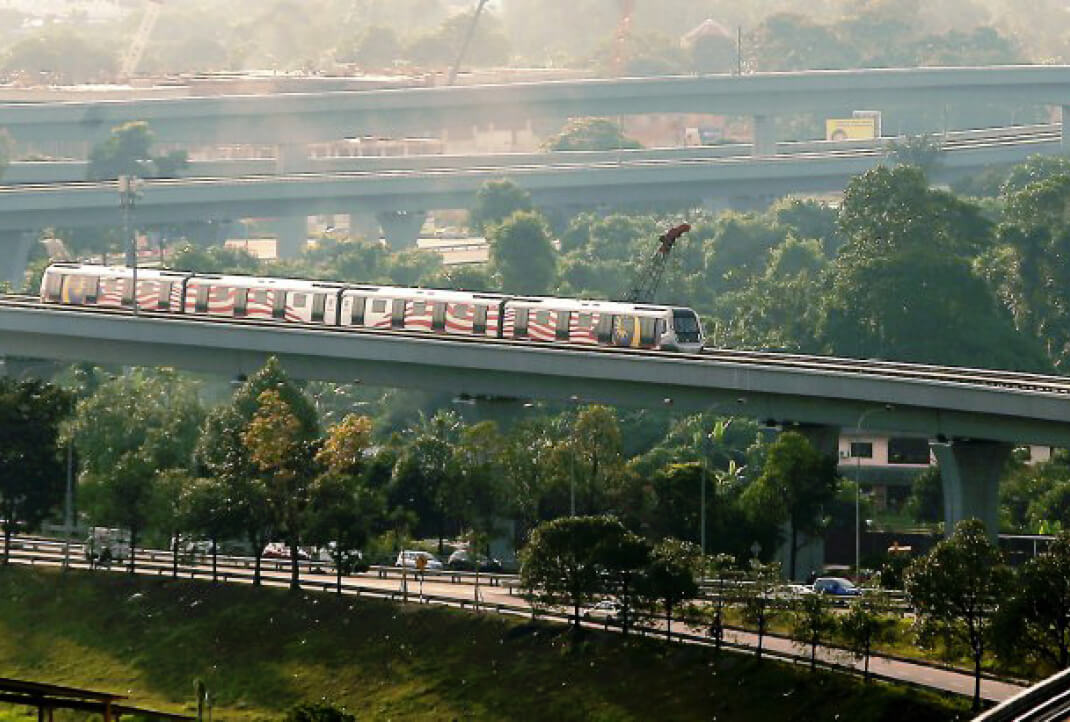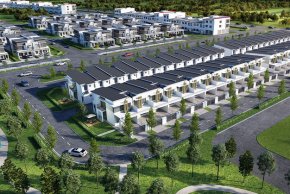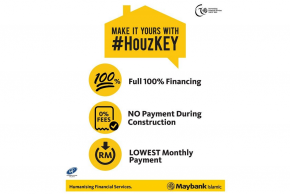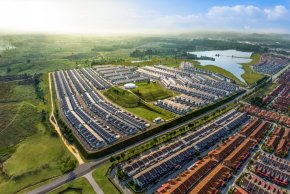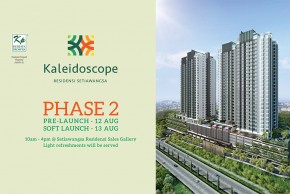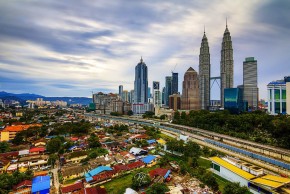AN estimated 1.1 million people travel by train and buses in Kuala Lumpur every day, according to the Land Public Transport Commission (SPAD).
With the launch of the Mass Rapid Transit Sungai Buloh-Kajang (SBK) Line tomorrow by Prime Minister Datuk Seri Najib Razak and the simultaneous opening of phase two of the MRT SBK Line, the number is expected to swell with an estimated 400,000 people expected to commute by the MRT every day.
Phase one of the MRT SBK Line (Sungai Buloh-Semantan), which began operations in December, has shown great promise.
In terms of ridership, it recorded two million passengers in just six months, with an estimated 15,000 people taking the MRT in a day.
With the #jomnaikmrt campaign by Mass Rapid Transit Corp (MRT Corp) trending on social media, excitement is in the air.
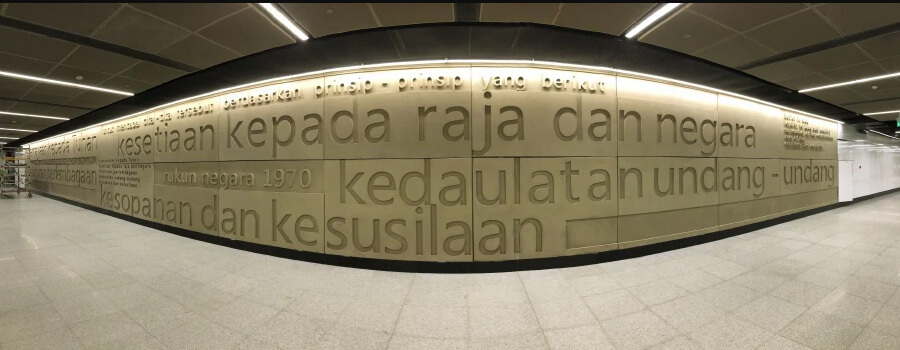
On Twitter and Facebook, people are sharing images of state-of-the-art designs and patriotic-themed murals at new stations, such as Muzium Negara, Merdeka, Bukit Bintang and Tun Razak Interchange.
MRT Corp strategic communications and stakeholder relations director Datuk Najmuddin Abdullah said the SBK Line would connect 44 shopping locations, 11 schools and higher learning institutions, as well as a number of hospitals.
“From an average of 15,000 passengers a day, we expect to see an increase to 150,000 passengers a day with the launch of the MRT phase two from Semantan to Kajang,” he said during a pre-launch briefing of the MRT SBK Line for the media on Thursday.
In December, Prasarana Malaysia Berhad, under its service brand RapidKL rail services, was appointed the official operator of the first MRT service in the Klang Valley.
“RapidKL rail services have forecasted a 10-fold increase in the number of users in coming months.”
Najmuddin said a trip from Sungai Buloh to Kajang would only cost RM5.50 with Touch ’n Go and RM6.40 for cash payment for the 80-minute journey.
SPAD chief executive officer Mohd Azharuddin Mat Sah said an independent survey conducted last year showed that 78 per cent of people who had never taken public transport said they were willing to try it, compared with 67 in 2015.
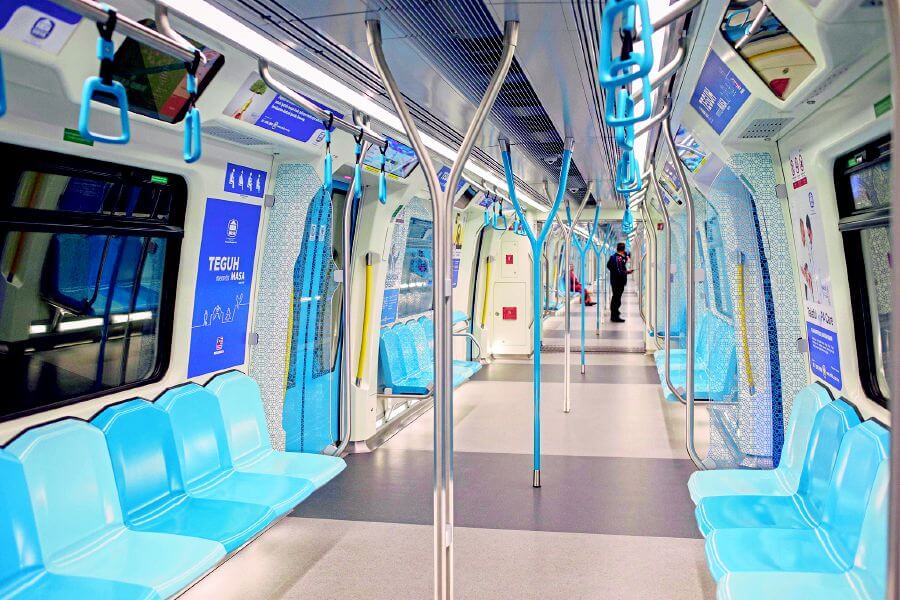
“Today, the ridership of train and buses for the whole of Greater KL is 1.1 million daily and we are well on the way to becoming a global city.
“With the completion of the MRT SBK Line and the upcoming MRT 2 (Sungai Buloh-Serdang-Putrajaya) and MRT 3, as well as the new LRT 3 (Bandar Utama-Klang), train travel’s market share of public transport is expected to increase from 60 to 70 per cent.”
The MRT project is part of the Klang Valley Mass Rapid Transit (KVMRT) System, one of the most important and largest transport infrastructure projects Malaysia has embarked on.
The 51km MRT SBK Line will cover 31 stations at a frequency of 3.5 minutes, with a capacity of half-a-million (500,000) commuters per day.
The MRT SBK Line will be integrated with other rail lines like KTM Komuter, the light rail transit Ampang and Kelana Jaya lines and the monorail line. It would allow commuters to travel easily between the city’s existing urban rail lines, Azharuddin said.
“It is an enormous change for the public transportation system, but the key factor, as the prime minister has highlighted, is to make it beneficial for the public and available at an affordable price.
“We are moving towards a phase where the public is increasingly convinced that the government is putting in the resources and funding to ensure a great public transport system for the city,” Azharuddin said.
When SPAD did its first modal share of public transportation within the Greater KL/Klang Valley in 2010, he said it was only at 10 per cent (one out of 10 people taking public transport), but within the last five to six years, it had grown to 20 per cent.
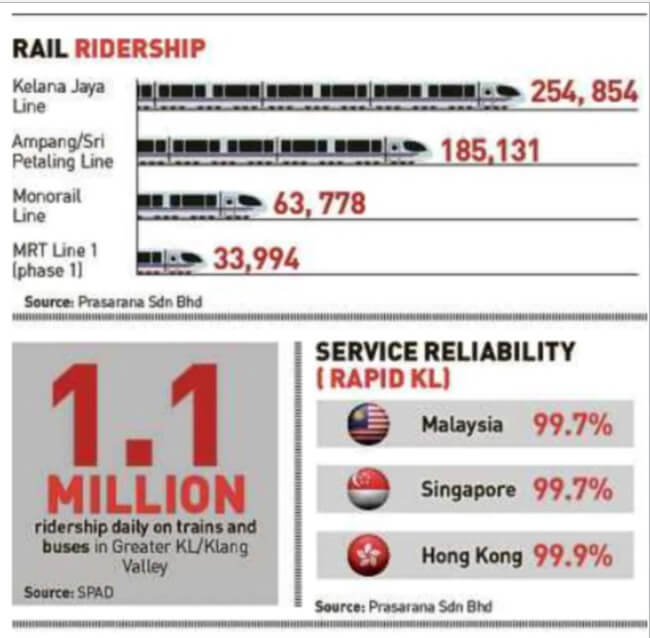
He said the goal was to increase the modal share to 40 per cent by 2030.
Azharuddin said public transport became an impetus to the Transformation Agenda when the prime minister started the National Transformation Programme (NTP) of which urban public transport is one of the national key result areas (NKRAs).
“Programmes were prepared essentially to solve congestion in the city centre, time-consuming journeys during the daily commute to/from work, costs people had to pay for fuel for their cars and not to mention carbon emissions that are bad for the environment.
“Because of the intent to make KL a global city, SPAD was set up in 2010 to integrate all the programmes and projects to make sure things moved as planned to meet this objective.
“Prior to this, there were 13 agencies handling the projects.”
Azharuddin said SPAD developed the Land Public Transport Master Plan to set out the vision and direction for public transport in Malaysia, which was approved by Parliament on Oct 16, 2013.
“From there, we embarked on projects like the MRT Line 1 (or MRT SBK Line), and work on the MRT line 2 is already full speed ahead.”
Last year, he said, work started on the LRT 3, a 37km line which would connect Bandar Utama to Johan Setia in Klang.
“The entire journey from end to end will take 58 minutes and the project is expected to be completed in 2020.
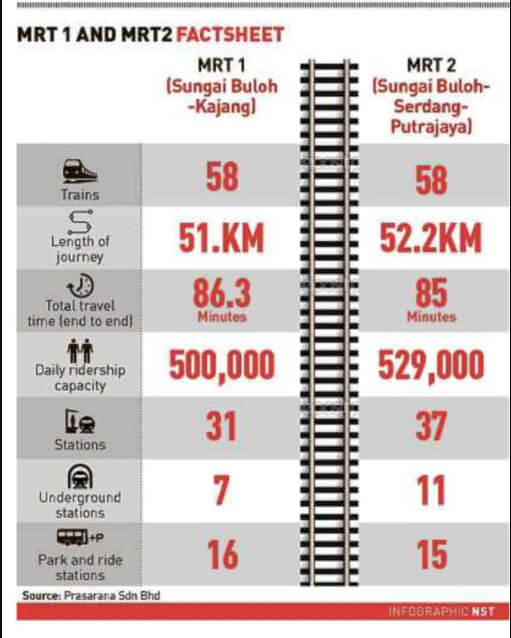
“It will serve an estimated two million people in the Klang Valley and transport 74,000 passengers daily.
“In that sense, we have a comprehensive and integrated programme planned to ensure that the public has a reliable public transport to meet their commuting needs.”
Elaborating on the MRT 1 route, he said 16 park and ride facilities with 7,800 car park bays would be available along the MRT 1 route in addition to 300 feeder buses on the ground to transport commuters to the stations.
“This gives people the option to take the bus, or if they prefer instead to drive to the stations, they can park conveniently and take the trains from there.”
Prasarana Malaysia Berhad president and group chief executive officer Datuk Azmi Abdul Aziz said the reliability of RapidKL’s rail services had been recorded at 99.7 per cent annually since 2012, making it comparable to those in major cities such as Bangkok, Singapore, London and Sydney.
“We are on a par with Singapore, which has a service reliability of 99.7 per cent while Hong Kong is at 99.9 per cent.
“Meanwhile, the International Bus Benchmarking group rated the service reliability of Prasarana buses at 98 per cent.
“They indicated that we are on track with other international systems.”
With the opening of the MRT SBK Line, commuters who live in Kajang would be able to travel from the MRT Kajang station to the MRT Merdeka station (which connects to the LRT station, Monorail KL Sentral and ERL Express) in just 45 minutes at RM3.20 (per passenger, one way).
Prior to the MRT line 1, the journey to the city centre would take them one hour and 45 minutes.
Operational since 2002, Prasarana is the asset owner and operator of Malaysia’s two LRT networks (Kelana Jaya Line and Ampang/Sri Petaling Line), the KL Monorail, Sunway-BRT and bus services in Kuala Lumpur, Penang, Kuantan and Kamunting.
Azmi said the company would be collaborating with Transport For London and Japan Railway East to facilitate exchange of workers for human resource development.
Prasarana was recently awarded the World Class Public Transport Provider by the Malaysian Canadian Business Council.
Besides rail services, the urban public transport NKRA was also aimed at making buses a more viable option in the Greater KL/Klang Valley area, said Azharuddin.
In 2015, the Bus Network Revamp project was executed to improve bus service reliability and bus connectivity in the central business district area.
Twenty new GoKL buses were introduced under the system, which currently serves an average of 38,000 commuters daily.
The same year, Malaysia welcomed its first Bus Rapid Transit (BRT), the 5.4km Sunway BRT serviced by environmentally-friendly electric buses currently serving a population of approximately 500,000 commuters in the suburbs of Sunway and Subang Jaya.
In the next five years, two additional integrated transport terminals (ITT) have been planned for Gombak and Sungai Buloh with the aim to divert more than 400 eastern (Gombak ITT) and northern (Sungai Buloh ITT) corridor express buses from entering the city centre.
The first successful ITT in Bandar Tasik Selatan, which caters to southern buses, commenced operations in 2011.
Another important highlight of the plans to ease congestion in the Greater KL/Klang Valley is the development of a BRT KL-Klang along the Federal Highway.
“It is the most congested highway in the country with users from Klang, Subang Jaya and Petaling Jaya travelling into
the city centre.
“We are planning to build a BRT, a dedicated bus lane that will improve connectivity in these areas. We just completed the exercise and received five bids, which we are evaluating at the moment. It will connect with other bus stops and rail lines,” said Azmi.
“It’s a 35km line which will reduce journey time from 70 minutes to 40 minutes from Klang to KL and will cover 25 stations.”

